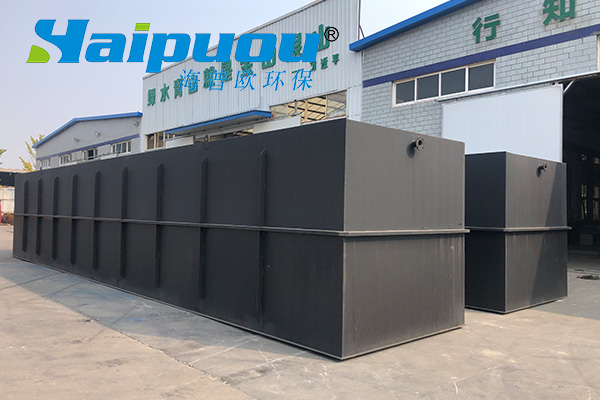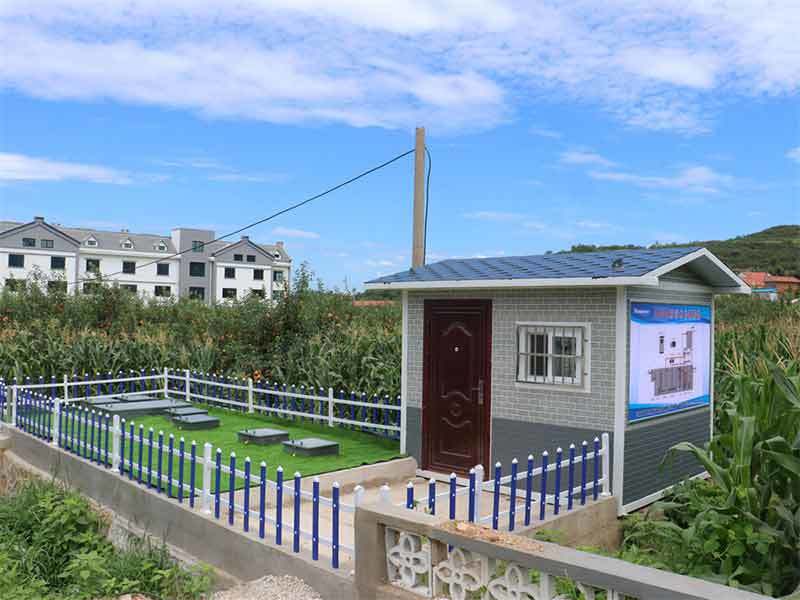- Overview
-
- Commodity name: Integrated sewage treatment equipment
Scope of Application
The integrated sewage treatment equipment is suitable for the treatment and reuse of domestic sewage and similar small-to-medium-sized industrial organic wastewater (e.g., from slaughtering, aquatic product processing, and food industries) in residential quarters, villages, towns, office buildings, shopping malls, hotels, restaurants, sanatoriums, government agencies, schools, military units, hospitals, expressways, railways, factories, mines, and tourist scenic areas. The quality of sewage treated by this equipment meets the Class 1B criteria specified in China’s Integrated Wastewater Discharge Standard.

Application Field
Its main treatment method adopts the biochemical treatment technology—contact oxidation process. The design of the integrated domestic sewage treatment equipment is mainly based on the water quality parameters of domestic sewage and similar industrial organic wastewater, calculated according to general domestic sewage quality, with the influent BOD₅ set at 200 mg/L.
Main Components
- Hydrolytic Acidification Tank
- Contact Oxidation Tank
- Impurity Sedimentation Tank
- Disinfection Treatment
- Sludge Aerobic Digestion Tank
1. Hydrolytic Acidification Tank
The primary function of this process is pre-treatment before sewage treatment. It subjects the wastewater to a certain degree of anaerobic fermentation to improve the biodegradability of the sewage. This is a crucial step prior to sewage treatment, as it directly affects the efficiency and duration of subsequent sewage treatment, maximizing treatment efficiency and reducing energy consumption.
2. Contact Oxidation Tank
Oxidation tanks are classified into several grades (standard type and enhanced type) based on the pollution degree of the water to be treated, typically determined by the treatment duration. The standard type is used when the treatment duration is no more than 4 hours, while the enhanced type is used for treatment durations between 4 and 6 hours. The effluent from the hydrolytic acidification tank flows by gravity into the contact oxidation tank for biochemical treatment. Most organic matter in the raw sewage is degraded and purified here. Aerobic bacteria use the filler as a carrier and feed on the organic matter in the sewage, decomposing the organic matter into inorganic salts to achieve purification. For aerobic bacteria to survive, sufficient oxygen must be present—i.e., the sewage must contain adequate dissolved oxygen—to ensure the biochemical treatment effect. Air for the aerobic tank is supplied by an air blower. The tank is equipped with new-type elastic three-dimensional fillers, which have a large specific surface area, long service life, easy biofilm formation, and corrosion resistance. The bottom of the tank uses swirling aerators, which ensure a high dissolved oxygen transfer rate, along with advantages such as light weight, no aging, no clogging, and long service life. The air-to-water ratio in the contact tank is approximately 12:1 (a two-stage contact tank is used for a flow rate of 0.5–5 m³/h).
3. Impurity Sedimentation Tank
After treatment in the biological contact oxidation tank, the effluent flows by gravity into the sedimentation tank to further precipitate and remove detached biofilms and some small organic/inorganic particles. The sedimentation tank operates on the principle of gravity: when sewage containing suspended solids flows upward, the solids settle due to gravity. The upper part of the sedimentation tank is equipped with an adjustable effluent weir to regulate the effluent water level; the lower part is provided with a conical sedimentation zone and a sludge aeration device (air supplied by the air blower). Sludge is transported to the sludge aerobic digestion tank via an air-lift system.
4. Disinfection Treatment
In accordance with the standard TJ14-74, the retention time in the disinfection tank is 30 minutes. For hospital sewage, the retention time in the disinfection tank is extended to 1–1.5 hours. Our company uses a chlorine dioxide disinfection device. The disinfection tank and disinfection device can adjust the chemical dosage according to the effluent volume—increasing the dosage for higher effluent volume and reducing it for lower volume. Other devices can be configured separately if required. (For industrial sewage treatment, the disinfection tank and disinfection device may be omitted.)
5. Sludge Aerobic Digestion Tank
The excess sludge discharged from the sedimentation tank undergoes aerobic digestion and stabilization in this tank to reduce sludge volume and improve sludge stability. The amount of sludge after aerobic digestion is small; during cleaning, a manure suction truck can extend from the inspection hole of the sludge tank to the bottom for suction and subsequent transportation (cleaning is required once every six months). The upper part of the sludge aerobic digestion tank is equipped with a supernatant reflux device, allowing the supernatant to overflow into the hydrolytic acidification tank.
Keywords:
Messages
Contact: +86 18016210178 (Ms.Liu)
Add:No.56, Donghuan Road, Zhucheng City, Weifang City, Shandong Province







